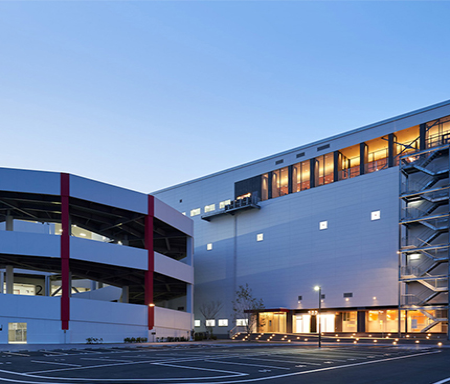
Don’t forget the risks in Japanese logistics property
The Japanese logistics sector has been booming over the past few years, with steadily growing demand pushing rental levels higher, and also absorbing the large supply coming to the market.
The Japanese logistics sector has been booming over the past few years, with steadily growing demand pushing rental levels higher, and also absorbing the large supply coming to the market. Even the prolonged pandemic has served as a tailwind for the sector as the rise in online shopping has increased the amount of logistics space needed.
Nonetheless, while the fundamentals of the logistics sector are sound, there are looming risks which could disrupt the market. Cap rates in the sector have compressed significantly as a result of increased competition for assets, and the cushion to absorb a potential shock has therefore become thinner. Indeed, cap rates in the logistics sector have become even lower than more established sectors such as Grade B offices and residential.
While the logistics market continues to demonstrate its strengths, risks are also looming larger. If these risks start to manifest, some cautious investors who were originally attracted to its stable prospects may look to exit the market.
Looking back at market trends over the past decade, annual volumes of new supply have been increasing yearly in Greater Tokyo. Although vacancy loosened between 2013 and 2016, it has tightened since then, even amidst the increasing supply added to the market in recent years. Rents have also grown by 14.5% since 2010, providing investors a boost of confidence. The drivers of demand are mainly the 3PL and e-commerce industries.
Although the fundamentals of the logistics market appear sound, the rapidly compressed cap rates may reflect overly optimistic investor attitudes. Based on Savills in-house surveys, prime logistics market cap rates in Tokyo have compressed from 3.9% in 2018 to 3.3% in 2021, mainly due to the large volumes of capital flowing into the sector.
Although our base-case scenario remains positive for the logistics sector, it is important to highlight the latent risks in this sector, especially when it appears clouded with optimism.
Compared with urban properties like offices, logistics properties have significantly less land value because they are situated in areas which are unsuitable for many other uses. This means that value-add initiatives are limited, and logistics properties could quickly lose their value if the buildings suffer from functional or economic obsolescence. For instance, there has been greater demand recently for modern logistics facilities which are larger and more accessible to residential areas. Hence, older properties which do not meet these requirements may rapidly fall out of favour.
Tenant concentration – many logistics owners are reliant on a small number of logistics and e-commerce companies – may leave landlords vulnerable, as a small number of large tenants may have significant rental negotiating power. And logistics and e-commerce companies are set to come under cost pressure due to a labour shortage, especially of delivery drivers.
Land prices have risen sharply, which is worrisome because they tend to lead to aggressive underwritings, and are likely accompanied by overly optimistic growth projections to support these projects. Additionally, due to high land prices, some developers may have built facilities in areas where accessibility is poor and attracting workers will be a challenge.
Overall, although we believe that the logistics market remains sound and that experienced investors can still capitalise on the growing demand, the market still has risks. When the market is strong, these may seem irrelevant, but in the current environment where cap rates are substantially compressed and development costs are significantly heightened, even a moderate correction could have significant consequences.
Investors should be cautious and should not be too aggressive for underwriting new assets. Also, they should mitigate risks by diversifying their portfolios, making facility improvements, and managing relationships with tenants. More diligent investors should become better off when the market faces harder times.
Further reading:
Savills Japan Logistics Report
Contact Us:
Tetsuya Kaneko



